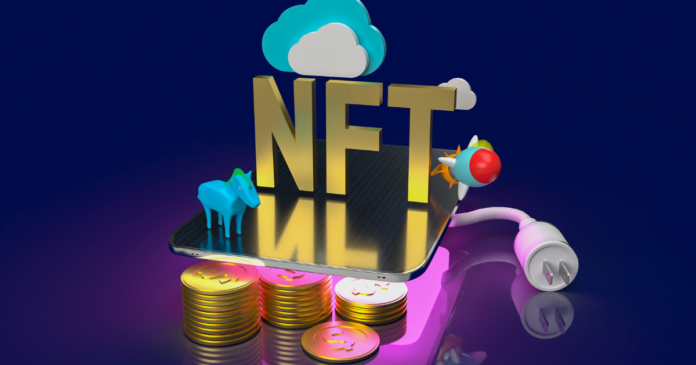As we bid farewell to another transformative year in the crypto space, we must evaluate how different sectors of the market performed.
In this article, we will look at one of the most captivating phenomena that has continued to redefine the crypto ecosystem: Non-fungible tokens (NFTs).
How did NFTs do in 2023?
NFT projects played an important role in crypto’s journey in 2023. Despite popular negative sentiments about the sectors, statistics show that NFT users have kept the space alive.
🔴 #NFT #Facts 🔴
The top 3 most expensive NFT Sales in 2023…👀❤️
1) CryptoPunks #5066 — 857 ETH
2) Bored Ape Yacht Club #7090 — 800 ETH
3) Fidenza #545 — 625 ETH#Crypto #NFTs #BAYC #CryptoPunks #Fidenza pic.twitter.com/lgxJgMhD96— All Facts Crypto (@AllFactsCrypto) December 28, 2023
In the past 30 days, the top 10 NFT blockchains have been on fire, racking up a massive $1.5 billion in sales. This shows that NFTs are still fashionable and in demand. Like in other sectors of the crypto industry, the NFT space welcomed innovations and saw some changes.
Some moments had a more lasting impact than others, and that’s what we’re looking at. For example, 2023 saw the emergence of Bitcoin Ordinals. There was also a division regarding creator royalties. In addition, the SEC brought its first case against NFTs this year.
Ordinals Took Us by Surprise
Earlier this year, Casey Rodarmor, a software engineer, invented Bitcoin Ordinals. Rodarmor launched the application on the Bitcoin mainnet after a blog post on January 21. Bitcoin Ordinals are the equivalent of NFTs on the Bitcoin blockchain. It is safe to say that the Bitcoin Ordinals took us all by surprise.
Ordinals are a way to create distinct digital items out of individual Satoshis that may be inscribed with text or graphics. This concept departs from traditional digital assets and NFTs as it relies on Bitcoin’s existing blockchain structure.
🟧 What happened in the last 24 hours in the Ordinals ecosystem 🟧
First brc-20 launched on a zk-rullup on bitcoin, and much more,
A 🧵👇
1/11 pic.twitter.com/7Moci9WeYB
— Jiurn 🧙🏽♂️ (@Jiurn) December 24, 2023
Ordinals were beyond mere hype. The stats prove this. By December 2023, 263K users had written over 47M Ordinals on Bitcoin. The expanded use of the network has also benefited miners, who have made a huge $150 million in fees on $850 million of traffic on Ordinals marketplaces.
Thanks to Ordinals transactions, the Bitcoin network surpassed Solana in monthly sales volume in May. With nearly $744 million in sales over 30 days in December, the network also surpassed the Ethereum network’s $391 million in revenues. It is important to state that not all Bitcoiners believe Ordinals are a plus for the network. But we can all agree that the Ordinals took the year by storm.
Some Outstanding Moments for NFT Projects
Several NFT projects made outstanding comebacks in 2023. For example, the renowned NFT collection Cryptopunks maintained its media spotlight in 2023 with sales that had never been seen before. A record-breaking sale of a Cryptopunk masterwork for an incredible $1.1 million on the market demonstrated the value and ongoing appeal of these digital treasures.
1 whale sweeps 6 Fidenza, 1 Autoglyphs, and 5 PudgyPenguins for $1,517,100 in the past 24h.
In 15 days, they’ve acquired 16 Pudgys, 9 Azukis, 5 BAYC and 2 CryptoPunks.
With over $6.45M across two wallets, their buying power remains strong. pic.twitter.com/5LHkTUxjkQ
— VanGoya (@vangoyaa) December 29, 2023
Interestingly, several other cryptopunks sold for substantial prices in the hundreds of thousands. This rebound established a standard for high-value deals in the face of market turbulence and reaffirmed the NFT market’s enduring appeal and investment potential.
Another highlight of the NFT market this year was the battle between OpenSea and Blur. Both platforms are NFT marketplaces. However, Blur launched a strong rivalry with OpenSea for the top spot.
OpenSea vs Blur, Q1 2023 pic.twitter.com/sSzpYnbsVa
— Loopify 🧙♂️ (@Loopifyyy) February 17, 2023
The “Royalty War” had a ripple effect on the entire NFT ecosystem. Blur’s victory in taking a sizable chunk of OpenSea’s previously held royalty market share demonstrated the dynamic nature of market rivalry. This win affected marketplace fees and revenue generation.
The SEC’s Case Against NFTs
Another high-profile moment this year was the SEC’s case against NFT. The US regulator charged Los Angeles-based entertainment firm Impact Theory for selling NFTs, which it termed unregistered securities.
The SEC charged a couple of other NFT projects for selling unregistered securities. However, several crypto experts and leading voices, such as Hester Pierce, rejected the commission’s claims.
Wow! SEC commissioners Peirce and Uyeda just released a statement saying they DISAGREE with the SEC's actions against Stoner Cats nfts
Comparing nfts to 1970s Star Wars collectables, and stating the need to protect artists' ability to create without excessive legal constraints🤯 pic.twitter.com/w7xOCI0grv
— okHOTSHOT (@NFTherder) September 13, 2023
Regardless, the SEC’s view of NFTs as unregistered securities led to a call for regulatory clarity on the asset class.
The optional royalty trend
Royalties made NFTs popular. They ensured creators earned a percentage of their work. However, the concept of optional royalties emerged in 2022 but took off in full force this year.
The new king of #NFTs has arrived.@Blur_io has zero marketplace fees and optional royalty payments, making it one of the cheapest venues to trade NFTs.
Blur has surpassed OpenSea to become the largest venue to trade NFTs with a 53% volume market share. pic.twitter.com/wUmVdJjosJ
— Elemont (@ElemontCapital) February 22, 2023
Optional royalties allow buyers to decide how much of the royalties they wish to contribute to an NFT. However, the drawback is that creators might not receive payment under this approach. Research showed that NFT creators received little royalties this year.
Royalty losses from the Bored Ape Yacht Club (BAYC) and Mutant Ape Yacht Club (MAYC) NFTs reached almost $20 million this year.
The trends witnessed this year show that the NFT space will see increased competition in 2024. We expect more integration between NFTs and DeFi in 2024. In addition, we believe the sector will have clearer policies in the coming year.




























